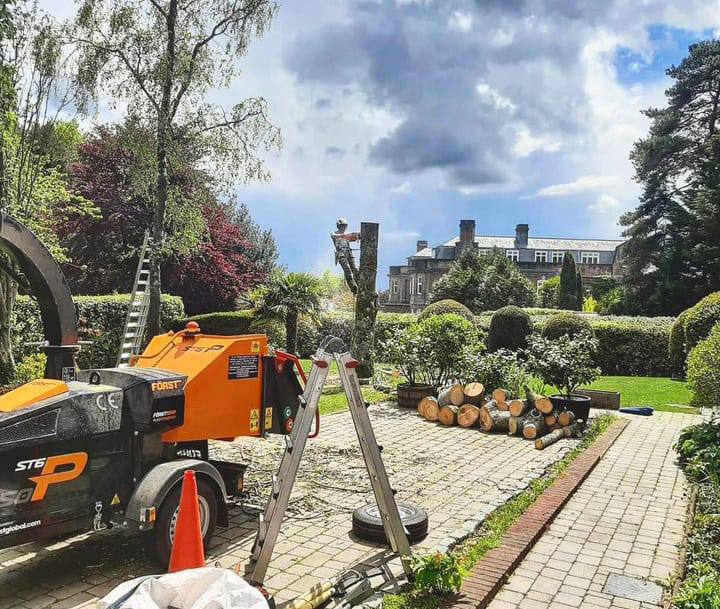Tree Crown Reduction: Incorporating Pruning Into Overall Tree Care Plans
Introduction: At Olney Tree Surgeons, we understand the importance of comprehensive tree care. One essential aspect of this is tree crown reduction, a critical pruning technique that can significantly enhance your trees’ health, safety, and aesthetics. In this blog post, we will explore how incorporating tree crown reduction into your overall tree care plan can benefit your landscape and ensure the longevity of your trees.
Understanding Tree Crown Reduction
Tree crown reduction involves the selective removal of branches and foliage from the upper part of a tree. This technique reduces the tree’s overall size, manages growth, and improves structural integrity. By carefully pruning the crown, we can:
- Enhance Light Penetration: This will allow more sunlight to reach the inner branches and the ground below, promoting healthier undergrowth and garden plants.
- Improve Air Circulation: Reduce the risk of fungal diseases and pest infestations by increasing airflow through the canopy.
- Maintain Structural Integrity: Prevent branches from becoming too heavy and potentially breaking, which can cause significant damage and pose safety risks.
Incorporating Crown Reduction Into Tree Care Plans
It should be integrated into a comprehensive tree care plan to maximise the benefits of tree crown reduction. Here’s how you can effectively incorporate this technique into your overall tree maintenance strategy:
1. Regular Assessments
Regularly assess your trees to identify structural issues, disease, or pest infestations. An experienced arborist from Olney Tree Surgeons can evaluate the health of your trees and determine if crown reduction is necessary. Regular assessments ensure that problems are addressed promptly, preventing them from escalating.
2. Seasonal Pruning
Incorporate seasonal pruning into your tree care plan. Different tree species have varying optimal times for pruning. For instance:
- Deciduous Trees: Prune during late winter or early spring when the trees are dormant. This minimises stress and encourages vigorous growth in the growing season.
- Evergreens: Light pruning can be done in late spring or early summer. To prevent damage, avoid heavy pruning during the dormant season.
Adhering to the appropriate pruning schedule ensures crown reduction is performed at the right time, promoting healthier growth and recovery.
3. Tailored Pruning Techniques
Different trees require different approaches to crown reduction. Tailor your pruning techniques based on the specific needs of each tree species. For example:
- Oaks and Maples: These trees benefit from a gradual approach to crown reduction, ensuring their structural integrity is maintained.
- Willows and Poplars: Fast-growing trees like these can tolerate more aggressive pruning and may require more frequent maintenance.
Understanding the unique requirements of each species ensures that crown reduction is effective and does not harm the tree.
4. Integrated Pest and Disease Management
Incorporating crown reduction into your tree care plan also involves managing pests and diseases. Pruning can help remove diseased or infested branches, reducing the spread of pathogens and pests. Regular monitoring and integrated pest management strategies can keep your trees healthy and resilient.
5. Safety Considerations
Safety is paramount in tree care. Ensure that all crown reduction work is performed by qualified professionals who adhere to safety standards. At Olney Tree Surgeons, our team is trained to use the latest tools and techniques, ensuring safe and efficient pruning operations.
6. Long-Term Tree Health
Crown reduction should be considered part of a long-term strategy for tree health. Regular pruning, combined with other tree care practices such as fertilisation, mulching, and watering, can enhance the overall vitality of your trees. A well-maintained tree is more resilient to environmental stresses and diseases.
Benefits of Incorporating Crown Reduction
By integrating tree crown reduction into your overall tree care plan, you can reap numerous benefits:
- Improved Tree Health: Enhanced light penetration and air circulation promote healthier growth and reduce disease risk.
- Increased Safety: Removing weak or overextended branches reduces the risk of breakage and potential property damage.
- Aesthetic Appeal: Well-pruned trees contribute to a more attractive landscape, adding value to your property.
- Longevity: Regular maintenance, including crown reduction, ensures your trees remain healthy and beautiful for years.
Conclusion: Tree crown reduction is a vital component of comprehensive tree care. By incorporating this technique into your overall tree care plan, you can ensure your trees’ health, safety, and beauty.
Call us on: 01234 981 895
Click here to find out more about Olney Tree Surgeons
Click here to complete our contact form and see how we can help you with your tree’s needs.

